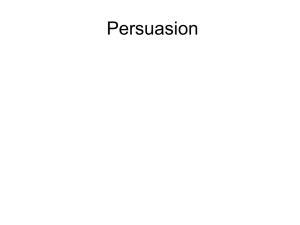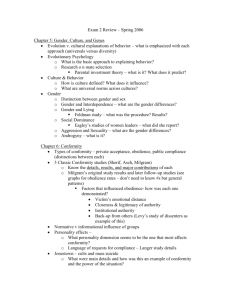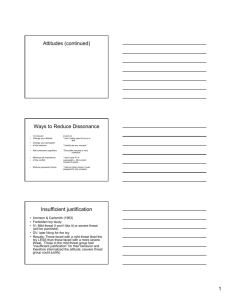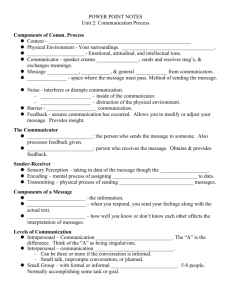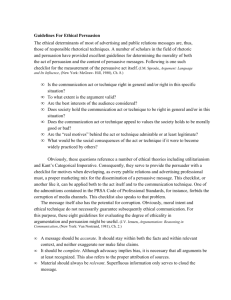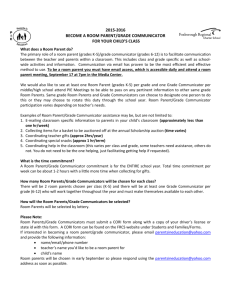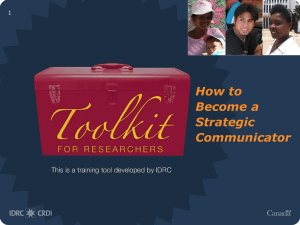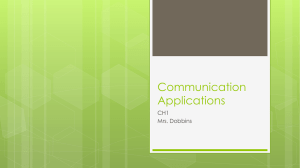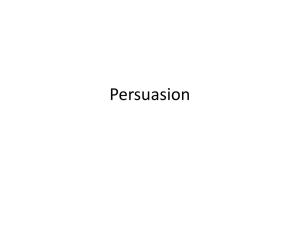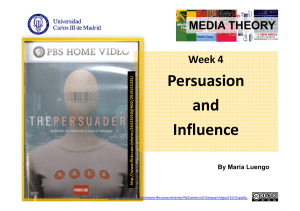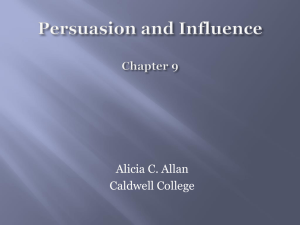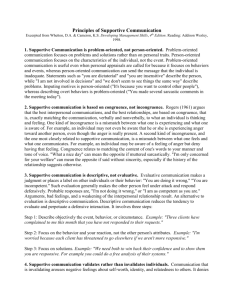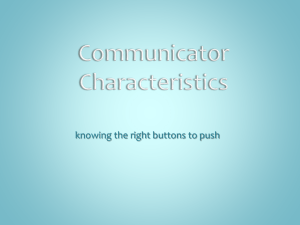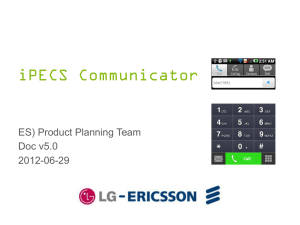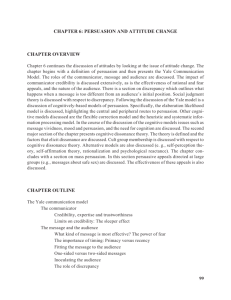Communication, Persuasion - Seattle Central Community College
advertisement
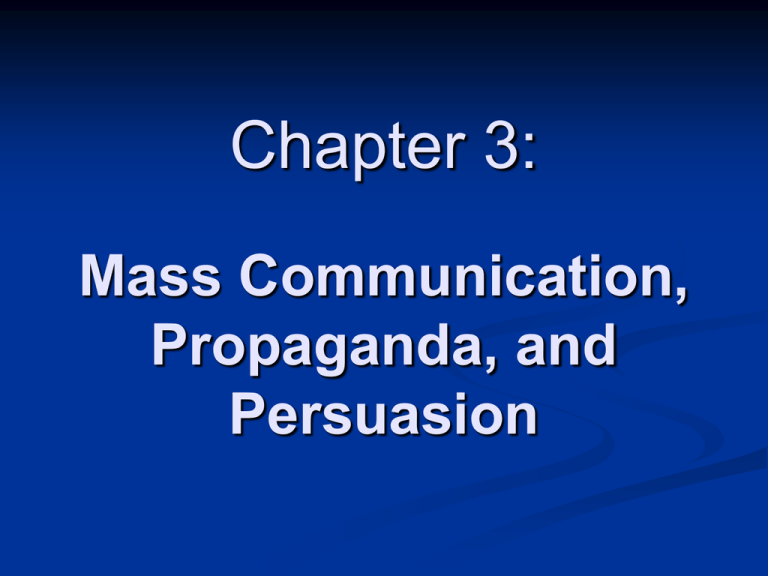
Chapter 3: Mass Communication, Propaganda, and Persuasion Routes to Persuasion Central Peripheral Few appeals use one route or the other exclusively http://seattletimes.nwsource.com/html/localnews/201185 5814_jail14m.html Key factors in effectiveness of communication 1. Source of communication 2. Nature of communication 3. Characteristics of the Audience Source of the Communication Expert and trustworthy. Attractiveness. Communicator argues against their own self-interest. Audience believes the communicator is not trying to influence them. If we like and identify – likely to be influenced. Nature of the Communication Compelled by fear – fear arousing with specific instructions more likely to change behavior. But – if behavior is too threatening, avoided. Statistics vs. personal examples – vivid powerful One-sided vs. two-sided arguments – audience position and informed-ness Order of presentation of arguments – primacy and recency (next slide) Relationship between credibility of communicator, discrepancy of views with audience, and persuasion. Primacy and Recency Effects Primacy Most evident when statements are back to back and behavior change follows a time gap Recency Most evident when enough time separates the two messages and audience commits soon after the second message. Characteristics of the Audience Self Esteem Higher less persuadable, more likely to act quickly in fear situation Prior Experience Happy and well fed Don’t want to be led around Counter arguments on the spot Discrepant views, one or two sided arguments. Cognitive Dissonance and Persuasion If message of the communicator is inconsistent with the audience, persuasion depends on… Size of the discrepancy Communicator variables (trustworthiness – can the communicator be changed or derided?) Other audience responses Innoculation/ability to develop arguments in opposition A few social influence tactics… Multiple Requests Foot-in-the-door – small request at first to larger Door-in-the-Face – large request to small That’s Not All! -- add incentives Your Persuasion Toolbag 1. How do you go about persuading others? 2. How do others try to persuade you? 3. Which attempts are effective? Why? Prevention, Intervention or Treatment? Primary prevention: Efforts targeting a broad group, not necessarily at risk. Secondary prevention: Efforts targeting a particular risk group. Tertiary prevention: Efforts targeting people with the problem designed to reduce relapse or mitigate the negative consequences of the problem. What might you prevent? Driving While Texting Health problems Burnout Violence Eating disorders, unhealthy eating habits Your ideas?
